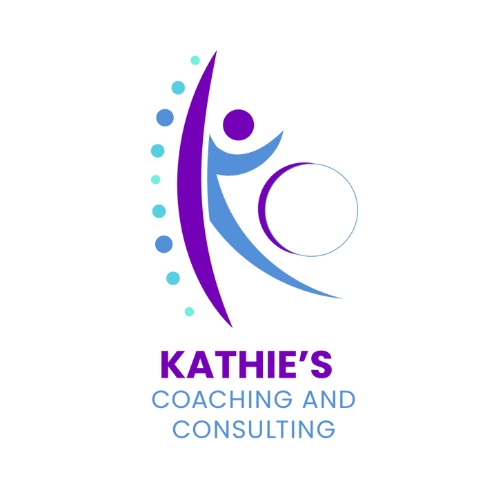Crafting Your Hero’s Journey in the Corporate World
In the vast expanse of corporate life, each individual’s career path can often feel like a unique epic, filled with its own trials, triumphs, and transformations. Joseph Campbell's Hero’s Journey, a narrative framework that outlines a hero's voyage through various stages of challenge and victory, provides a compelling metaphor for understanding and framing our professional experiences.
This blog post explores how you can apply the Hero's Journey to your career development, drawing parallels that turn everyday professional experiences into a story of personal and collective growth.
This lack of engagement and visibility into their career path can lead to decreased productivity and fulfillment, underscoring the need for frameworks like the Hero’s Journey to provide a more engaging and transformative professional experience.
Statistics
According to Gallup's "State of the Global Workplace: 2022 Report," only 21% of employees worldwide are engaged at work. Many professionals feel disconnected from their roles and undervalued in their career journeys. This disengagement can be interpreted as a failure to recognize or embrace one's own "Hero’s Journey" in the workplace, where employees do not see a path to personal growth and achievement within their roles.
Understanding the Hero’s Journey
Joseph Campbell’s framework in his book The Hero with a Thousand Faces describes a series of steps that almost every hero in mythology goes through: departure, initiation, and return. These steps involve the hero leaving their familiar world, facing trials, receiving aid, achieving a victory, and then returning changed or transformed. In the corporate context, this journey can be a powerful metaphor for the career path of any professional.
1. The Call to Adventure: Starting Your Career
In Campbell’s narrative, the journey begins with a call to adventure. For a professional, this is akin to the start of your career or a significant shift in your job role. It’s the moment you step out of your comfort zone—whether it’s graduating from college, switching careers, or taking on a new project that stretches your capabilities. This stage is about recognizing opportunities and daring to pursue them, despite the uncertainties and fears.
2. Refusal of the Call: Hesitation and Doubt
Following the call to adventure, heroes often hesitate. In the corporate world, this could manifest as self-doubt or a reluctance to step into a new role or project. It’s a natural part of the journey where you weigh the risks against the potential rewards. Understanding this as a normal phase can help professionals push through their hesitation and embrace the challenges ahead.
3. Meeting the Mentor: Guidance on Your Path
Just as heroes meet mentors who guide them, professionals often encounter mentors who provide wisdom, training, and advice. These mentors are invaluable in helping navigate the corporate landscape, offering insights drawn from experience and helping clarify the path forward. Actively seeking mentors or being open to mentorship opportunities can significantly impact your professional journey.
4. Crossing the Threshold: Committing to the Journey
This stage involves fully committing to the new adventure—taking on the new role, starting the project, or moving to a new company. It marks the point of no return, where the professional fully steps into their new reality. This transition is often accompanied by new challenges that test resolve and ability.
5. Trials, Allies, and Enemies: Overcoming Obstacles
In any career, you will face trials that test your skills, forge alliances, and sometimes encounter opposition. These challenges are crucial for growth, mirroring the obstacles that heroes face on their quests. How you deal with conflicts, manage workplace relationships, and navigate politics plays a significant role in your narrative.
6. Approach to the Inmost Cave: Facing Your Biggest Challenge
The inmost cave in a hero’s journey represents the most challenging part of the adventure, which can be a major career crisis, such as dealing with a failed project, facing layoffs, or undergoing significant professional criticism. It’s a pivotal moment that requires all your skills and resilience.
7. The Ordeal: The Crucial Confrontation
This is often the climax of the journey, where the hero faces their greatest challenge yet. In a corporate setting, this could be a critical presentation, a major sales pitch, or leading a high-stakes project. Success here leads to great rewards, while failure could mean significant setbacks.
8. The Reward: Seizing the Sword
After facing the ordeal, the hero obtains a reward. Professionally, this could translate to a promotion, successful project completion, or recognition within the company. It’s a time for celebration, but also preparation for future challenges.
9. The Road Back: Taking Your Skills to New Challenges
This stage involves applying what you’ve learned to new areas of your professional life. It might involve taking on bigger projects or helping to mentor others. The journey thus far has prepared you for greater responsibilities.
10. The Resurrection: Rebirth and Transformation
Professionally, this is about reaching a pinnacle of achievement that significantly alters your career path—perhaps becoming a leader within your industry. This stage is characterized by profound personal and professional growth.
11. Return with the Elixir: Sharing Your Wisdom
The final stage of the hero’s journey involves returning to the ordinary world with newfound wisdom and perhaps a responsibility to help others. In a corporate context, this means using your experiences and successes to influence and uplift others, mentoring new professionals, and contributing to the broader professional community.
Conclusion
By viewing your career through the lens of the Hero’s Journey, you can see each challenge as an integral part of a larger narrative of personal development and professional achievement. This perspective not only enhances your ability to navigate the corporate landscape with resilience and adaptability but also enriches your contributions to your organization and peers. It offers a structured yet flexible approach to personal growth, encouraging professionals to see beyond the immediate hurdles and view their career trajectories as epic narratives full of purpose and potential.
Ultimately, applying the Hero’s Journey to your career development is about more than just succeeding in the traditional sense. It’s about crafting a fulfilling narrative that not only advances your professional goals but also contributes to your overall life story. By doing so, you transform your career from a series of jobs into a cohesive, inspiring legend that can motivate and influence others in their professional endeavors.
As you continue your journey, remember that each challenge is an opportunity to grow, each setback is a lesson, and every victory is a chance to inspire. Your career, much like the Hero’s Journey itself, is a profound journey of transformation that can leave a lasting impact on your world.
Kathie Owen, Corporate Wellness Professional







